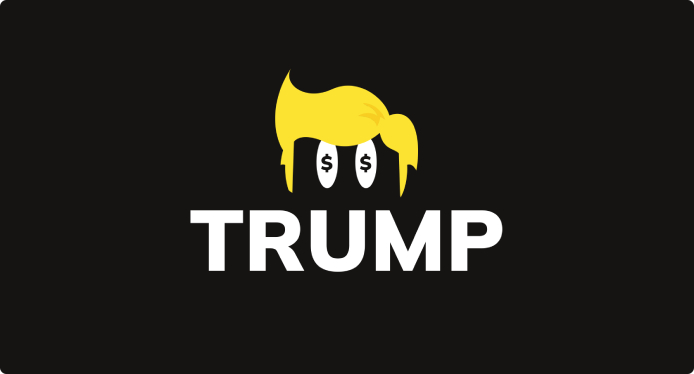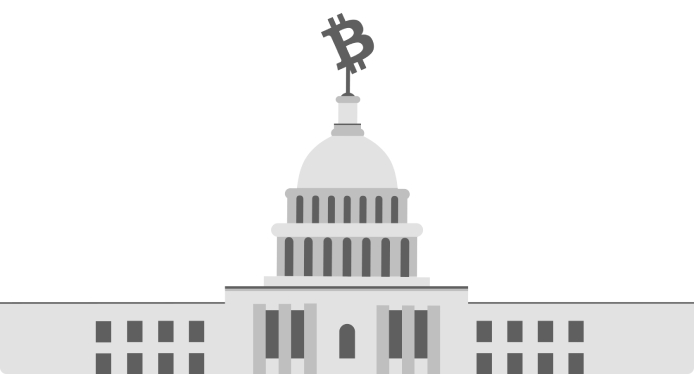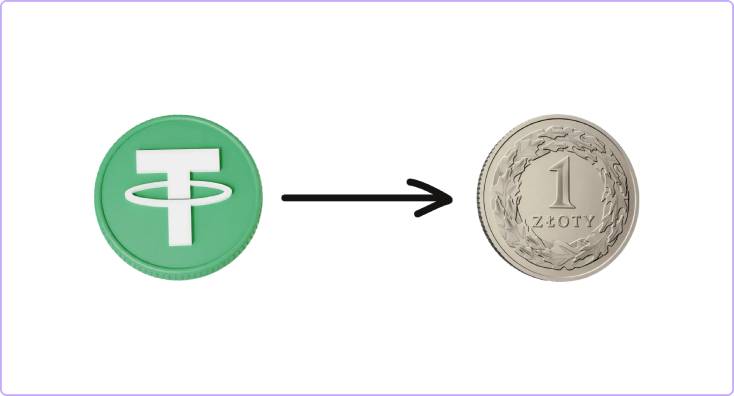
In the modern financial world, cryptocurrency has become an integral part of the global economic landscape. Since its inception, Bitcoin and other digital assets have attracted the attention of investors, regulators, and politicians. With the coming to power of Donald Trump, the 45th and 47th President of the United States, interest in cryptocurrencies has taken on a new dimension. His political decisions, statements, and initiatives have directly affected the digital asset market, causing both enthusiasm and concern among market participants. Let’s consider how the President Trump factor has influenced the development of the crypto industry, evaluate his campaign promises, appointments to key positions, and the prospects for integrating Bitcoin into the US national reserves.
Trump’s campaign promises and signing of a decree on the development of the crypto industry
During his election campaign, President Donald Trump actively supported the development of digital financial technologies. He promised to create favorable conditions for the cryptocurrency industry, reduce regulatory pressure and stimulate innovation. Immediately after the inauguration, he signed an executive order “Strengthening American Leadership in Digital Financial Technologies”, which provides for the creation of a working group to develop new crypto regulations and consider the possibility of creating a national reserve of Bitcoins. In other words, the new document provides for the protection of Americans from prosecution for mining, software development, validation and other cryptocurrency transactions.

Among the key initiatives adopted were:
- Formation of a working group under the leadership of White House Counsel David Sachs, which should review current regulations within 30 days, propose changes or repeal within 60 days, and submit new recommendations within 180 days.
- Analysis of the possibility of creating a national reserve of digital assets.
- A complete ban on central bank digital currencies (CBDCs). The document prohibits the creation, issuance and promotion in the United States and abroad of CBDCs (Central Bank Digital Currency) that could threaten the financial privacy of citizens. This step demonstrates the Trump administration’s tough stance on state control over digital assets, emphasizing decentralized solutions.
- One of the most important decisions was the cancellation of President Joe Biden’s executive order 14067, signed on March 9, 2022, which regulated the development of digital assets in the United States. At the same time, the “Framework Program for International Cooperation on Digital Assets” issued by the US Treasury Department in 2022 was canceled. This paves the way for a new stage in the development of the cryptocurrency industry in the country.
The new decree ensures fair and open access to banking services for cryptocurrency businesses. From now on, financial institutions will be able to cooperate with crypto companies without fear of regulatory sanctions. As a result, the Securities and Exchange Commission has repealed an accounting rule that had been preventing banks from dealing in cryptocurrencies.
The document demonstrates the new US administration’s clear support for cryptocurrencies. However, to create a fully regulated market, Congress, regulators, and federal courts need to coordinate their actions.

Will Trump become the first “Crypto President”?
At the Bitcoin 2024 conference, Trump announced his desire to make the US the “crypto capital of the world” and integrate bitcoin into national reserves. He emphasized the importance of cryptocurrencies for the future of the financial system and stressed the need to create a favorable regulatory environment for investors and entrepreneurs. These statements have caused a wide resonance in the cryptocurrency community and raised expectations about the administration’s future steps in this direction.
Strategic Bitcoin Reserve: Trump’s Promise That Could Change the US Financial Landscape
One of Donald Trump’s main initiatives is the creation of a national strategic bitcoin reserve. According to Polymarket experts, the probability of this idea being implemented exceeds 40%. A bill has already been introduced that proposes to create a reserve of 1 million BTC over five years, which at the current exchange rate is about $97 trillion.
The main goal of this step is to reduce the US national debt, which has already exceeded $36 trillion. It is expected that the mass purchase of Bitcoins by the US government will sharply increase the demand for this asset, increase its confidence among investors and raise its status in the global financial system.
Will the law become a reality?
Interestingly, the initiator of the bill, Senator Cynthia Lummis, believes that it can be passed during the first 100 days of Trump’s presidency. The project has a high chance of being supported, since it finds supporters even among Democrats. For example, it was supported by Congressman Ro Hanna, an ally of Senator Bernie Sanders. He stated that Bitcoin’s growth potential makes it an attractive asset even for the US Federal Reserve.
If the bill is approved, it could be an unprecedented step in the global economy and make Bitcoin a key financial asset in the US.
New SEC Chairman
On December 4, President Donald Trump called Paul Atkins “a proven leader in smart regulation.” Trump highlighted Atkins’ progressive approach to digital assets and innovation, stressing that they play a key role in strengthening the United States. Atkins has significant experience: he was CEO of Patomak Global Partners, co-chair of the Token Alliance, and actively promoted the use of digital assets. Since 2017, he has been developing best practices for the issuance and trading of digital assets. A prominent critic of SEC policies under Gary Gensler, Atkins has repeatedly stated that bitcoin is not a security. His industry experience and closeness to the Trump administration make him a strong candidate to be the SEC chairman.
Trump’s meme coin is gaining traction: What does this mean for the cryptocurrency market?
Donald Trump’s meme coin is causing a lot of buzz just as cryptocurrency is moving closer to widespread adoption in traditional investment portfolios. But it could also remind investors why they were previously wary of the market. The cryptocurrency industry has high hopes for President Trump’s new administration, which has promised to make the U.S. the “crypto capital of the world” and introduce lighter regulations than under Biden.
Meanwhile, new investment vehicles, such as spot bitcoin exchange-traded funds (ETFs), have reignited investor interest. This helped bitcoin surpass $100,000 for the first time in November. On Thursday evening, bitcoin was trading at $104,800, just below its all-time high of $109,115.
But crypto enthusiasts may have gotten more than they bargained for when Trump and his wife Melania launched two meme coins. $TRUMP and $MELANIA quickly skyrocketed in value.

- $TRUMP reached a market cap of $15 billion just hours after its launch on January 17.
- The next day, $MELANIA appeared on the market, after which $TRUMP fell by 40%.
As of now, $TRUMP has a market cap of $7.1 billion, ranking third among meme coins after Dogecoin and Shiba Inu. $MELANIA ranks 17th with a market valuation of $350 million (data from CoinMarketCap).
The market value is calculated based on the available number of coins in circulation, but a significant part of the tokens is not traded and is likely stored in the Trumps’ assets. According to The Wall Street Journal, the theoretical value of President Trump’s cryptocurrency assets has reached $30 billion, although any attempt at a mass sale could provoke a sharp drop in price.
New trends in cryptocurrency with the arrival of President Trump
The president has repeatedly stated that his administration is already taking the first steps towards large-scale changes. Since the beginning of 2024, Bitcoin ETFs have become the main trend in the cryptocurrency market. Their introduction has attracted billions of dollars of institutional capital to the industry. After the success of Bitcoin ETFs, the next logical step was to expand the crypto exchange-traded funds market to other assets.
The SEC (US Securities and Exchange Commission) has already begun considering applications for the launch of new ETFs, which include:
- XRP is one of the largest and most popular altcoins, which is actively used in international money transfers.
- Solana (SOL) is known for its fast and cheap transactions, popular among DeFi and NFT developers.
- Litecoin (LTC) is one of the oldest altcoins, often called the “silver” of the cryptocurrency world.
- Hedera (HBAR) is a promising blockchain project focused on the corporate sector and financial institutions.
If the SEC approves these ETFs, it would be a landmark event as it would allow traditional investors to invest in these assets directly through the stock markets. It would also increase the liquidity and stability of altcoins, which would gain institutional capital backing.
Futures and staking ETFs are a new trend
In addition to spot ETFs, futures cryptocurrency funds are currently being actively considered, which will work with derivatives on Bitcoin and altcoins. A futures ETF is a fund based on futures contracts, rather than on actual cryptocurrencies. This allows traders to gain exposure to cryptocurrency without actually owning the tokens.
Another promising direction is staking ETFs, which can offer passive income through a staking mechanism. Such funds can hold assets that support Proof-of-Stake (PoS), such as Ethereum, Solana or Cardano, and automatically accrue rewards for participating in the network.
Futures and staking ETFs can make cryptocurrency investments even more attractive for traditional market players.

Banks and large financial institutions are accepting cryptocurrency
Previously, traditional banks and investment funds avoided cryptocurrency due to regulatory risks. However, the situation is now changing dramatically, and large financial institutions have begun to actively include digital assets in their investment portfolios. For example:
- Wells Fargo – one of the largest banking institutions in the US, allowed its clients to invest in Bitcoin through certified financial advisors.
- Bank of America – opened the possibility of managing cryptocurrency assets through its investment programs.
- Morgan Stanley – now allows the inclusion of Bitcoin in clients’ portfolios as part of a long-term strategy.
This means that cryptocurrency is becoming an officially recognized asset class in traditional finance. This will allow millions of clients to invest in BTC and other cryptocurrencies directly through their bank accounts. Banks and hedge funds can now create structured financial products based on cryptocurrencies.
Mass adoption of cryptocurrency: what next?
All these changes lead to a new stage of mass adoption of cryptocurrency in the global financial system. With ETFs, institutional investors will be able to safely trade cryptocurrencies through the stock markets. Legalizing crypto instruments in banks will open up the opportunity for millions of retail investors to enter this market. Trump’s policy aimed at liberalizing the market could establish the US as a global center for cryptocurrency business and financial technologies.
All the prerequisites point to market growth. If new ETFs and regulatory relaxations are approved, 2025 could become a “golden age” for the crypto industry. One thing is for sure: the crypto market is no longer on the periphery of the financial system – it is becoming an integral part of it.
 Support
Support 











